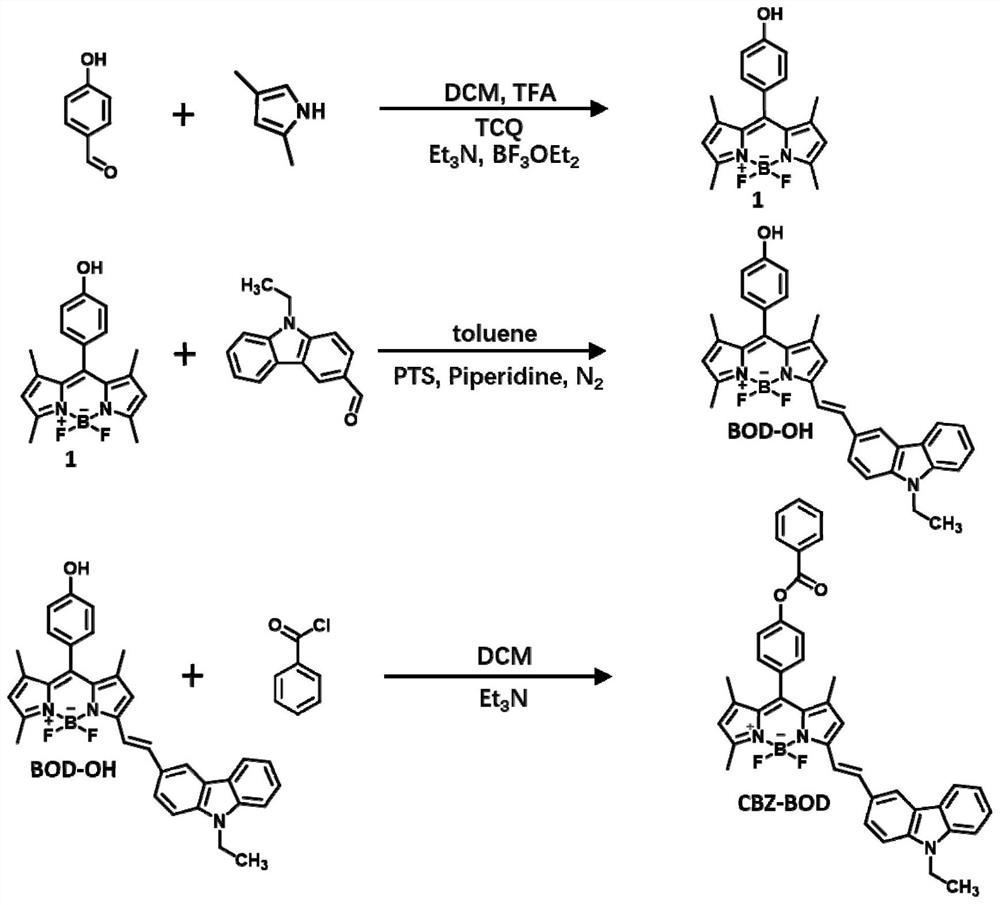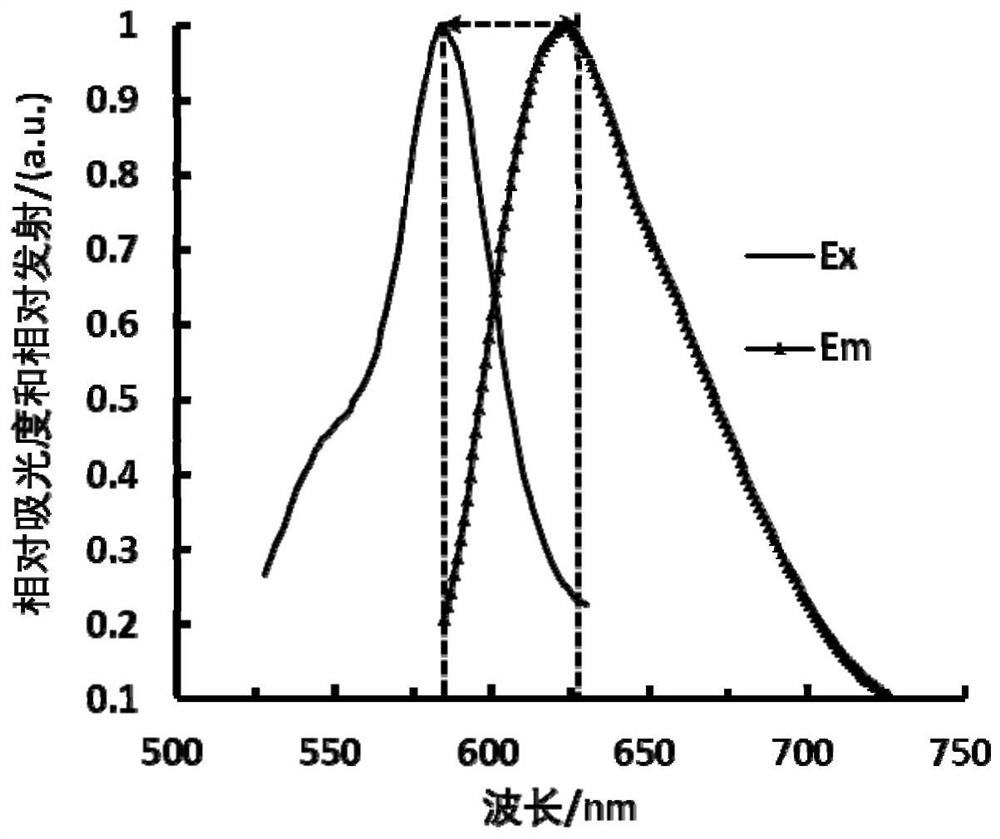Novel BODIPY fluorescent probe for detecting carboxylesterase 1, preparation method and application thereof
A fluorescent probe, carboxylesterase technology, applied in fluorescence/phosphorescence, chemical instruments and methods, compounds containing periodic table Group 3/13 elements, etc., can solve background fluorescence interference, poor tissue penetration, emission Short wavelength and other problems, to achieve the effects of easy large-scale production, large molar absorption coefficient, and narrow fluorescence spectrum peaks
- Summary
- Abstract
- Description
- Claims
- Application Information
AI Technical Summary
Problems solved by technology
Method used
Image
Examples
Embodiment 1
[0031] Preparation of a Novel BODIPY Fluorescent Probe for Detection of Carboxylesterase 1
[0032] Its specific preparation synthetic route is as follows figure 1 Shown:
[0033] Synthesis of Intermediate Compound 1
[0034] Weigh p-hydroxybenzaldehyde (1.00g) into a round bottom flask, dissolve it with dichloromethane (150mL), add 2,4-dimethylpyrrole (1.69mL), and start stirring at a speed of 500rpm. Add 6 drops of trifluoroacetic acid as a catalyst to catalyze the reaction, react for 12 hours, add chlorobenzoquinone (2.01 g) as an oxidant, and react for 5 hours. Triethylamine (10 mL) was added dropwise using a constant pressure dropping funnel, and boron trifluoride diethyl ether (10 mL) was added dropwise after half an hour. React overnight. After the reaction was completed, extract with water, take the organic layer, dry with anhydrous sodium sulfate, then remove the solvent by rotary evaporation, and further purify the compound by column chromatography (PE:EA=2:1) ...
Embodiment 2
[0041] Determination of maximum absorption wavelength and maximum emission wavelength of a novel BODIPY fluorescent probe for detection of carboxylesterase 1
[0042]Prepare a 20mM probe stock solution with DMSO as a solvent, dilute to obtain a probe stock solution with a concentration of 2mM, and prepare a mixture of 2.500mL PBS (100mM, pH=7.4), 2.475mL acetonitrile, and 0.025mL probe in a centrifuge tube. The concentration of the probe in the mixed solution was 10 μM, and a control was set. The sample was placed in an ultraviolet spectrophotometer (UV-6100a) for measurement to determine the maximum absorption wavelength of the probe. After obtaining the maximum absorption wavelength of the probe, the sample was placed in a fluorescence spectrophotometer (F97Pro, Shanghai Lenslight) to measure the maximum emission wavelength. The result is as figure 2 As shown, the maximum absorption wavelength is 585nm, and the maximum emission wavelength is 624nm.
Embodiment 3
[0044] Selectivity Test of Carboxylesterase 1 (CES1) with Novel BODIPY Fluorescent Probe for Detecting Carboxylesterase 1
[0045] To determine the selectivity of the probes for carboxylesterase 1, the probes were added to different enzyme solutions. Prepare a mixed solution with a total volume of 100 μL, containing 98 μL PBS buffer solution, 1 μL probe stock solution (2 mM) and 1 μL CES1 (1 mg / mL). The mixture was incubated at 37° C. for 60 min, and 100 μL of acetonitrile was added to quench the reaction. The final concentrations of probe and CES1 were 10 μM and 5 μg / mL, respectively. Replacement of CES1 with lysozyme, trypsin, papain, chymotrypsin, acetylcholinesterase, serum protease, lysozyme, lipase, pepsin, helicase, proteinase K, and bovine serum albumin under unchanged conditions , to obtain different enzyme solutions, using a microplate reader (Synergy H 1 ) to measure the fluorescence intensity. Such as image 3 As shown, the fluorescence intensity of carboxyles...
PUM
 Login to View More
Login to View More Abstract
Description
Claims
Application Information
 Login to View More
Login to View More - R&D
- Intellectual Property
- Life Sciences
- Materials
- Tech Scout
- Unparalleled Data Quality
- Higher Quality Content
- 60% Fewer Hallucinations
Browse by: Latest US Patents, China's latest patents, Technical Efficacy Thesaurus, Application Domain, Technology Topic, Popular Technical Reports.
© 2025 PatSnap. All rights reserved.Legal|Privacy policy|Modern Slavery Act Transparency Statement|Sitemap|About US| Contact US: help@patsnap.com



